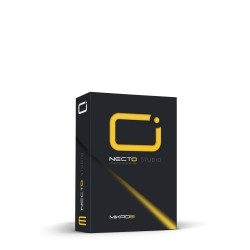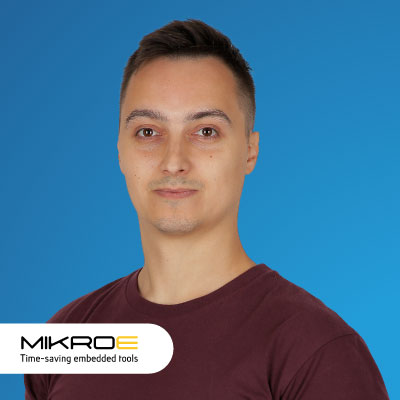From MikroC to NECTO Studio: Understanding Library-Based vs. SDK-Based Development
This session explains the core differences between traditional library-based development in mikroC and the modern SDK-based workflow used in NECTO Studio. You’ll learn how mikroSDK structures drivers for GPIO, SPI, ADC, and other interfaces, and why its unified and modular approach makes embedded development more scalable across different MCUs. The webinar also highlights how NECTO’s architecture helps you move away from static dependencies and toward reusable, platform-independent code that adapts easily to new hardware.
Through practical demonstrations, the session shows how to migrate real mikroC projects into NECTO Studio, comparing workflows side by side to illustrate what changes - and what stays familiar. You’ll see how to reorganize project structure, configure mikroSDK drivers, resolve compatibility gaps, and validate functionality on physical hardware. By the end, you’ll understand the full development shift from mikroC to NECTO and how adopting mikroSDK leads to faster iteration, cleaner code, and long-term flexibility in embedded projects.
Featured Products:
You Will Learn:
- Key differences between library-based and SDK-based workflows.
- The advantages of the mikroSDK GPIO driver compared to the mikroC GPIO driver.
- How mikroSDK supports a unified driver approach for GPIO, SPI, ADC, and other interfaces across MCUs.
- Practical benefits of modular and reusable development in NECTO Studio.
- Real-world examples of transitioning projects from mikroC PRO to NECTO Studio.
Agenda:
11:00 - 11:05 (EDT)
Welcome and Brief Introduction
What to expect from the session and why transitioning from mikroC to NECTO matters.
11:05 - 11:30 (EDT)
Library-based vs. SDK-based Workflows
Understanding the fundamental differences between mikroC-style and mikroSDK-style development.
Use cases where each approach shines - and where it doesn’t.
11:25 - 11:35 (EDT)
Modular Development with mikroSDK
How mikroSDK enables scalable and reusable embedded code across MCUs.
11:35 - 11:45 (EDT)
Real-World Project Transition: mikroC to NECTO
Live example showing how to migrate a mikroC-based project to NECTO Studio with mikroSDK.
Key tips and best practices for a smooth migration.
11:45 - 11:00 (EDT)
Q&A Session
Your chance to ask questions and dive deeper into NECTO Studio and mikroSDK workflows.
NECTO Studio Webinar Host
Branko Jaksic -
Creative Roads Manager, MIKROE
Branko spent four years working on the development of NECTO Studio, gaining an in-depth understanding of its advantages and challenges. He then transitioned to the marketing department, where he focuses on helping engineers better understand NECTO Studio and showcasing its full potential.
ABOUT NECTO
NECTO Studio is a complete, cross-platform integrated development environment (IDE) for embedded applications providing everything necessary to start developing, and prototyping, including Click board applications and GUIs for embedded devices. Rapid software development is easily achieved as developers do not need to consider low-level code, freeing them up to focus on the application code itself. This means that changing the MCU or even the whole platform will not require developers to redevelop their code for the new MCU or platform. They can simply switch to the desired platform, apply the correct board definition file, and the application code will continue to run after a single compiling.
ABOUT MIKROE
MIKROE is committed to changing the embedded electronics industry through the use of time-saving industry-standard hardware and software solutions. With unique concepts like Remote Access, One New Product/Day, Multi-Architectural IDE and most recently, the EmbeddedWiki™ platform with more than million ready-for-use projects, MIKROE combines its dev boards, compilers, smart displays, programmers/debuggers and 1850+ Click peripheral boards to dramatically cut development time. mikroBUS™; mikroSDK™; SiBRAIN™ and DISCON™ are open standards and mikroBUS only has been adopted by over 100 leading microcontroller companies and integrated on their development boards.












